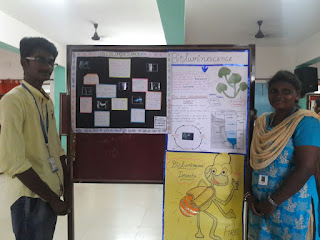WTO (World Trade Organization):
-WTO is an intergovernmental organization, regulates
the trade between the countries.
- It is the largest
international economic organization in the world.
- The WTO deals with
regulation of trade in goods, services and intellectual property between
participating countries by providing a framework for negotiating trade agreements and a dispute
resolution process aimed at enforcing participants' adherence to
WTO agreements, which are signed by representatives of member governments.
WTO agreements and Codex alimentarius
Codex Alimentarius Commission is an
organisation that develops independent science based international food
standards.
1.
Agreement on Technical Barriers
to Trade (TBT) is an agreement that refers to technical regulations
and conformation of assessment procedures which apply to all commodities
including food. The TBT Agreement also covers measures that are intended to
protect human safety and health.
2.
Agreement on Sanitary and
Phytosanitary Measures (SPS) this agreement covers food safety where
members are entitled to establish sanitary and phytosanitary measures for the
protection of human health, provided the measures are consistent with the
provisions of the agreement. A common example of regulations whose objective is
to protect human health is the labelling of cigarettes indicating that they are
harmful to health. Sanitary and phytosanitary measures must be based and
applied in a manner that would not be used as a disguised restriction that will
affect international trade.
The SPS Agreement states that all
members can base their sanitary and phytosanitary measures on the international
standards, guidelines or recommendations. They also have the option to make
their SPS measures stricter that international standards if there is a scientific
justification for it. To ensure transparency, Member countries are required to
notify if they have made any changes to the SPS measures especially if it
affects trade. Members have to also set up an Enquiry Point from where they can
respond to requests for information on their SPS measures.
Member countries of the WTO have the
sovereign right to have a level of protection for foods that they consider
appropriate as acceptable levels of risk. However, these levels of protection
on foods must be based on a risk assessment. All those Members whose
measures are in keeping with international standards are within their WTO
obligations. If they have made their measures more stringent than the
international standard then they could be challenged to justify such measures
if they lead to a trade barrier.
These protection measures will be equal
for domestic and imported products so there is no discrimination against
foreign sources of food supply. Members are expected to promote the review and
development of international standards. They need to accept the SPS measures of
other member countries as equal even if they different from their own measures
if the measures of other countries provide appropriate level of protection.
SPS Measures in the area of food safety
may include
§ Control and inspection procedures
§ Pesticide tolerances
§ Food additive approval processes
For food safety, the SPS Agreement
makes specific reference to the standards, guidelines and recommendations
established by the Codex Alimentarius Commission. Members are required to also
participate in meetings, within the limits of their resources, in relevant
international organizations and their subsidiary bodies especially in the Codex
Alimentarius Commission in the field of food safety. This helps to promote the
development and periodic review of standards, guidelines and recommendations.
For food safety, the SPS Agreement, will use Codex standards in the following
five areas
§ Food additives
§ Veterinary drugs and pesticide residue
§ Contaminants
§ Methods of analysis and sampling
§ Codes and guidelines of hygienic practices
What the TBT Agreement contains
The TBT Agreement aims to ensure that
technical regulations and standards for packaging, marking and labelling
requirements, and analytical procedures for assessing conformity do not create
unnecessary obstacles to trade. For Codex purposes, most of the provisions
under the TBT Agreement seek to protect consumers by providing information,
mainly in labelling requirements, nutritional requirements, quality provisions,
and methods of analysis to promote fair trade practices.
All food standards not covered by the
SPS Agreement should be considered under TBT related measures. These provisions
include classification and definition, essential composition and quality
factors, packaging requirements and measurements (size, weight, etc.), so as to
prevent any fraudulent practices that can deceive consumers. Under the TBT
Agreement governments may decide that certain international standards are not
appropriate for such reasons like fundamental technological problems or
geographical factors.
















